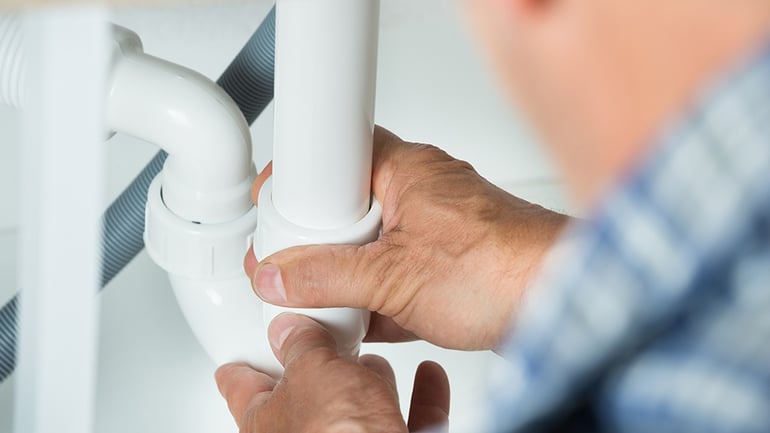 The first thing to know is that the supply and drainage subsystems are two distinct operations without overlap. Bridges between the two exist, but the bridges are what make the system worth having. In plumbing jargon, any bridge between the supply and drainage subsystems is a fixture.
The first thing to know is that the supply and drainage subsystems are two distinct operations without overlap. Bridges between the two exist, but the bridges are what make the system worth having. In plumbing jargon, any bridge between the supply and drainage subsystems is a fixture.
Any device that draws freshwater and discharges wastewater is a fixture, including toilets, kitchen and bathroom sinks, bathtubs/showers, washing machines, and outside faucets. All of these fixtures are designed to keep the supply and drainage systems strictly segregated.
Learn more about the anatomy of drainage systems with Warner Service below:
Drain Line. Each kitchen and bathroom plumbing fixture has its own drain line. Each drain line from a sink, bathtub/shower, and toilet ties into a larger main line, which takes water out of your home.
If you live in an urban or suburban area, you get water from the local municipality. Wastewater drains back into a sewer system with septic tanks. Septic tanks generally need to be pumped out about every 10 years to prevent backup, which can cause problems with your home's drainage system.
Trap. These devices do exactly as their name implies, and you can see them if you open a cabinet underneath a kitchen or bathroom sink plumbing. The curved or S-shaped pipe traps water inside, preventing sewer gases from coming back into your home.
Some kitchen sinks also have grease traps to collect grease that could cause clogging.
Toilets are self-trapped and don’t require additional traps. However, bathtubs frequently have drum traps to form a seal against sewer gas and to collect hair and dirt to prevent clogged drains.
Because grease and hair are the most common cause of drain clogs, traps often have clean-out plugs that give you easier access to remove or break up any blockage.
Nut & Ferrule. Several connections are needed when connecting a trap, including the nut. This connects two pieces together with a threaded fitting.
A ferrule forms the seal, while the nut simply screws down over the ferrule to form a watertight seal to prevent sewer gases from entering your home.
Vent Pipe. The vent pipe allows water to pass out of the drains easily. In most modern homes, vents are through the roof. Roof flashing, which is made from heavy grade rubber, lead, or sheet metal, holds the vent pipe in place.
Pitch. While not a physical part of a home drainage system, pitch is the angle in which water flows easily and gradually with the help of gravity.
Every sewer or septic system drainpipe, whether underground or in a wall, must have some type of pitch and be sloped properly to allow wastewater leaving your home to drain out.
According to the DIY Network, to ensure water will drain properly and won't back up in the drain line, a good Rule of Thumb to follow when installing pipe (or ensuring that a professional is doing it properly) is a drop of ¼ -inch per foot.
Shutoff Valve. Some fixtures have individual supply shutoff valves, so you don't need to close the main shutoff to repair them. Before you try any DIY solutions to plumbing problems, turn off the water supply to the fixture or the main shutoff.
In addition, check with a local plumbing code official or plumbing technician before you add or change any pipe in your home. You’ll learn what’s allowed and what’s prohibited and whether or not a homeowner is allowed to do his or her own work.
For more information about bathroom anatomy, click below to download Warner Service’s Plumbing Maintenance Checklist:


